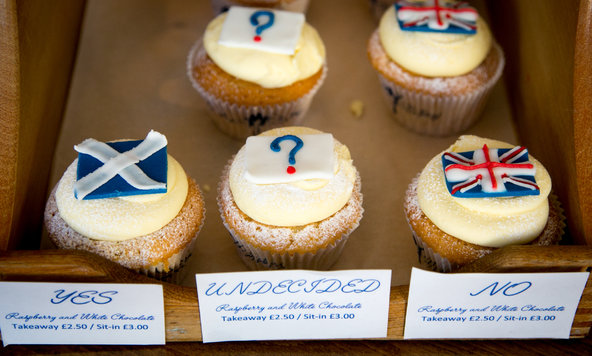Scotland: Public Opinion and a Grand Wager
By NRC on September 23, 2014

Scotland defied everyone’s, well at least half of the people’s, expectations when the Scottish people voted against independence last week. The ramifications of this outcome have yet to be fully understood, but what has happened in the run-up to this vote holds implications for politics, global economy and public opinion research.
The origins of this saga can be traced back to November 2013 when the British Parliament passed the Scottish Independence Referendum Bill which provided for a single-question referendum asking "Should Scotland be an independent country?" The vote on this referendum would be held, presumably, sometime in the near future. Many saw this as British Prime Minister David Cameron’s attempt to appease the Scottish and the Scottish National Party amongst growing tensions over Scotland’s relationship to the UK. What seemed like sly political move by Cameron a year ago aged into a potentially-disastrous miscalculation like a fine single-malt biding its time in the barrel.
Scottish discontent has been growing over issues ranging far and wide – Scots are more liberal than their English counterparts and some view the relationship with the greater UK as exploitative. The British navy stations its nuclear submarines off the coast of Scotland despite Scotland’s desire to be nuclear-free and oil revenue from drilling off the Scottish coast does not proportionately find its way back to Scotland.
After nearly a century of cries for Scottish home rule, or Scottish devolution, and years of the Scottish National Party’s manifesto pushing for a Scottish independence referendum – Scottish independence finally picked up the momentum that it needed to be seriously considered. In September of 2013, one year before the referendum and two months after the Referendum Bill passed, support for independence stood at a solid, but not winning, 37%. Cameron must have surely had the poll numbers when he embarked on the high-stakes wager of offering a binding independence referendum, but he was maybe a bit too self-assured that support for the independence referendum would never reach a viable percentage of support. Unexpected moves such as the enfranchisement of those aged 16 and older only further compounded support for a Yes vote (support for independence is strongest amongst the younger age groups). By May of this year, those in support of independence had inched up to 40%.
In the week before the referendum a year later, that number topped 48%, in some cases up to 50% depending on the poll. At this point, Cameron and government ministers stopped dismissing the independence movement as folly and started pleading with the people of Scotland; the unionist camp issued dire warnings of the impending fallout that Scotland’s breaking away would unleash as well as actually going so far as to politely ask the Scottish people to stay.
A mere 48 hours before the referendum took place, with Yes and No camps in a statistical dead heat, Cameron along with the Labour Party’s Ed Miliband and Deputy Prime Minister Nick Clegg pledged to finally devolve power to the Scottish government in the proposed “devo max” plan. The final result’s divergence from the polls, 45% for and 55% against, could be attributed to the the oversampling of Yes voters and the so-called shy No voters who did not want to publicly reveal that they planned to vote against independence. For the most part, though, pollsters were not terribly off the mark as some had worried. Retrospective analysis of the polls can also help fine-tune polling methods for the future.
Although the Scottish independence referendum did not pass, it has already given hope and solidarity to other independence movements, most notably Catalonia. Despite the referendum not passing, the entire saga has been a bright reminder that democracy is alive.
Popular posts
Sign-up for Updates
You May Also Like
These Related Stories

Your Citizen Survey is NOT a Political Poll

How Can You Be So Sure? Seeking the Gold Standard of Survey Accuracy

